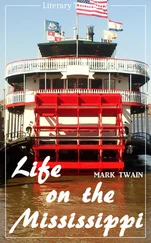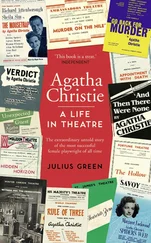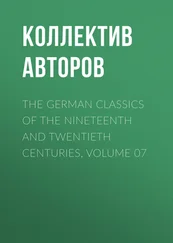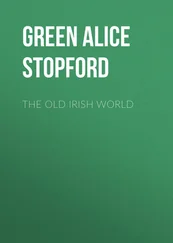Alice Green - Town Life in the Fifteenth Century, Volume 1
Здесь есть возможность читать онлайн «Alice Green - Town Life in the Fifteenth Century, Volume 1» — ознакомительный отрывок электронной книги совершенно бесплатно, а после прочтения отрывка купить полную версию. В некоторых случаях можно слушать аудио, скачать через торрент в формате fb2 и присутствует краткое содержание. Жанр: literature_19, foreign_antique, foreign_prose, Историческая проза, на английском языке. Описание произведения, (предисловие) а так же отзывы посетителей доступны на портале библиотеки ЛибКат.
- Название:Town Life in the Fifteenth Century, Volume 1
- Автор:
- Жанр:
- Год:неизвестен
- ISBN:нет данных
- Рейтинг книги:3 / 5. Голосов: 1
-
Избранное:Добавить в избранное
- Отзывы:
-
Ваша оценка:
- 60
- 1
- 2
- 3
- 4
- 5
Town Life in the Fifteenth Century, Volume 1: краткое содержание, описание и аннотация
Предлагаем к чтению аннотацию, описание, краткое содержание или предисловие (зависит от того, что написал сам автор книги «Town Life in the Fifteenth Century, Volume 1»). Если вы не нашли необходимую информацию о книге — напишите в комментариях, мы постараемся отыскать её.
Town Life in the Fifteenth Century, Volume 1 — читать онлайн ознакомительный отрывок
Ниже представлен текст книги, разбитый по страницам. Система сохранения места последней прочитанной страницы, позволяет с удобством читать онлайн бесплатно книгу «Town Life in the Fifteenth Century, Volume 1», без необходимости каждый раз заново искать на чём Вы остановились. Поставьте закладку, и сможете в любой момент перейти на страницу, на которой закончили чтение.
Интервал:
Закладка:
All these burdens however could be borne so long as business prospered in their hands. If a Parliament like that of 1258, or a great statesman like Simon de Montfort, urged that England should herself become an independent and self-supporting centre of manufactures, these seemed as idle words to monopolists dealing in wool with command of the world’s market, who saw no need to forsake their easy path to wealth at a moment when the growth of manufactures in the Netherlands opened a vast market for English produce. In the time of Edward the Third it is said that 30,000 sacks of wool were shipped every year from English ports. 59 59 A sack was 364 lbs. of 16 oz. each (Schanz, ii. 569).
But before the reign of Edward had closed, the exporters of wool knew that they had fallen on evil days. Trade began to slip from their grasp. The revenue they paid from their profits to the King’s Exchequer fell in the few years from 1391 to 1411 to one-fifth of its former value, 60 60 Stubbs, iii. 69, Stat. 27, H. VI. c. 2.
and was still calculated at this melancholy fifth in 1449. Instead of the thirty thousand sacks which they yearly counted in the fourteenth century, they could not at the close of the fifteenth century collect more than 8,624 sacks, and in the last year of Henry the Eighth even this number had shrunk to under 5,000. 61 61 Schanz, ii. 15.
Taxes which lay comparatively lightly on them in happy days, fell as an intolerable burden when their warehouses lay empty, and their ranks were thinned by bankruptcy and desertion. 62 62 Under the system of paying a fixed sum in good and bad years alike the poor merchants became bankrupt, and in the middle of the sixteenth century the number of wool exporters fell enormously (Schanz, ii. 17). An extremely interesting statement by the Staplers of the causes of their decay is given by Schanz in vol. ii. 565-9.
At the very moment when all England was being rapidly turned into a land of sheep pastures for the endless production of wool, the great company of the wool traders was finally and irrevocably ruined.
The wool, in fact, was being sold at home, and out of the ruin of the merchants of the Staple the cloth-makers sucked no small advantage. For the great revolution in trade was rapidly being completed – the revolution by which England was turned from being a country whose chief business was exporting wool into a country whose chief business was exporting cloth. 63 63 In the years from 1485 to 1546 general trade had increased by one-third, while the wool trade had decreased by one-third (Schanz, ii. 12).
The people had indeed long manufactured rough cloth for common use. 64 64 In the Paston Letters there is even in the fifteenth century complaint of the quality of Norfolk cloth, i. 83.
But during the reigns of the three Edwards the idea had constantly gained ground that by working up their own raw material 65 65 Ashley’s Woollen Industry, 39, afterwards expanded in his Economic History, part ii., chap. iii. This book was published after these pages had been printed. Riley’s Mem. London, 149-50; Schanz, i. 436-440, 588-9.
Englishmen might easily retain for themselves the profits which foreigners had till now secured, and manufacturers were undoubtedly doing a considerable export trade in the middle of the fifteenth century. 66 66 The first charter to the company of drapers or dealers in cloth in London was in 1364.
Half a century later, in 1411, the very year when the subsidy on wool fell to a fifth, broad-cloths are first mentioned in an Act of Parliament; and from this time they became the chief cloths of trade. As though they had been for a while half forgotten by the Exchequer, the exporters of cloth found themselves free from all subsidy tax and only obliged to pay to the indifferent authorities tolls that amounted to less than two per cent. for natives and merchants of the Hanse occupied in the trade, and less than eight per cent. for aliens; and complacently measured this sum with the tolls of the Staplers – the thirty-three per cent. paid by merchants of the Staple, or seventy per cent. by all other traders, 67 67 This statement is made by Schanz, i. 441, and his reasons are given, ii. 1-7. 31 H. VI. c. 8.
a tax which perhaps explains why in 1424 Parliament had to forbid the carrying of sheep over sea to shear them there. The manufacturers, too, made alliance with the discontented wool-growers. A farmer who could sell his wool next door, did not trouble to send it with vexatious formalities over sea to Calais; and in course of time the cloth merchants insisted upon laws which gave to them during certain seasons the first choice of the wool before the Staplers were even allowed to enter the market. 68 68 4 H. VII. c. 11; Schanz, i. 449.
Under these circumstances trade grew apace. Carracks of Genoa carried English cloths to the shores of the Black Sea; galleys of Venice fetched them to the pits of the Venetian dyers; merchants of the Hanseatic League sold them in the fair of Novgorod; English traders travelled with them to the inland markets of Prussia, and gave them in exchange for casks of herrings in Denmark. At the close of the century the English Merchant Adventurers exported about 60,000 pieces of cloth yearly; and in the beginning of the sixteenth century the cloth dealers boasted that never before in the memory of man was so much cloth sold out of England. The 60,000 bales rose in 1509 to 84,789 pieces, and in 1547 to 122,354; 69 69 Schanz, i. 11; ii. 17, 18.
and the dealers claimed further gratitude and admiration of their country for the fact that they had “by their industry” raised by a fifth the price demanded from the foreigner. 70 70 Schanz, ii. 571-2.
Meanwhile the manufacturer was also getting hold of the home market, as the great religious corporations and landowners who had once provided on their own estates for all local wants recognized the new condition of things, and instead of making cloth at home as of old, sent every year far and wide across the country to the great clothing centres to buy material for the household liveries, 71 71 In 1472 the prior of Christ Church, Canterbury, buys from a London alderman two pieces of cloth for gentleman’s livery, nine for yeoman’s, and five for groom’s, the price, £39 14 s. ; from a “raymaker” in New Salisbury he buys similar cloths in 1475 and 1480; again from Hadley, in 1499, he got eighteen pieces, and russet cloths from a Cranbrooke clothier. (Hist. MSS. Com. v. 436-7, 459.) Fastolfe bought cloth for his soldiers at Castlecoombe, Wilts (Paston Letters). The Warden of Merton, Bishop Fitz James, bought for his fellows and himself at Norton Mandeville in Essex. (Rogers’ Economic Interpretation of History, 151.)
seeking from one place the coarse striped cloth of the old pattern and from another the goods of the new fashion. The fine black copes of worsted were favourite gifts of benefactors to churches, and a patriotic Norfolk gentleman, after seeing a “tippet of fine worsted which is almost like silk,” decided to “make his doublet all worsted for worship of Norfolk.” 72 72 Paston Letters, ii. 235. 1465.
Nor was the growth of manufacturing enterprise confined to the making of cloth. For a couple of centuries the iron trade had made of the Weald the Black Country of those days, and had stirred the Forest of Dean with the din of its seventy-two moveable forges; and now, what with the metals and what with the coal of the country, “the merchants of England maintain and say that the kingdom is of greater value under the land than it is above.” 73 73 Debate between the Heralds of France and England, probably published from 1458 to 1461, translated by Pyne, p. 61. Published in French by the Société des Anciens Textes Français. In 1454 the commons petitioned that silver mines in Cornwall, Devon, Dorset, and Somerset, should be worked (Schanz, i. 493). For coal see Paston, iii. 363. Nottingham Records, i. 145. In 1307 there were complaints about the corruption of London air by use of coal. Cruden’s Gravesend, 84-5.
In the reign of Edward the Fourth when there was a riot among the Mendip miners, and the Lord Chief Justice went down to “set a concord and peace upon the forest of Mendip,” it is said ten thousand people appeared before him at the place of trial. 74 74 Hist. MSS. Com. vi. 347.
But for all this miners could no longer keep pace with the demands of the country, now that new industries on all sides required metal that had once gone to supply the wants of the farmer only; and though stores were brought from Sweden and Spain, the price of iron increased to double what it had been before the Plague. 75 75 Rogers’ Econ. Interpretation, 276.
Shipbuilders at the end of the fourteenth century were fitting out vessels for foreign as well as for English buyers. English gunsmiths began to send out of their workshops brazen guns and bombards superior to anything made in France, and which were said to have given England its success in the French war under Henry the Fifth. 76 76 Brazen pieces, invented 1340 or 1370, were first used in England at the siege of Berwick, 1405 (Eng. Chron. 1377-1461, p. 184); not known in France so well (Three books of Polydore Vergil’s English History, 9-1 °Camden Society). For the Lydd gun of 1456 the gunmakers were paid 11s. 8d.; the binding and iron for it cost 18s. “Guns with six chambers” mentioned as early as 1456 in Cinque Port towns. (Hist. MSS. Com. v. xvii.)
A number of towns, big and little, boasted of their bell-foundries, as for example London, Salisbury, Norwich, Gloucester, Bridport, and others. 77 77 Journ. of Archæl. Association, 1871, p. 416; Hist. MSS. Com. vi. 489.
The copper-workers of Dinant had traded with England since the thirteenth century, and in the fourteenth century had an entrepôt at Blackwall; but in 1455 the founders set up their industry in England, stealing away secretly from Dinant to profit by the cheaper labour and ready sale in this country. 78 78 Pirenne, Dinant, 102, 94, 95. In the fifteenth century the Dinant traders sent their wares by Antwerp, not by Damme.
Flemish experts taught to Englishmen the art of brickmaking, and native builders were setting up throughout the country the first brick houses that had been seen in it since the departure of the Romans. 79 79 For English brick building see Rogers’ Agric. and Prices, iv. 440. First notice of bricks at Cambridge 1449, in London 1453, in Oxford 1461; common in eastern counties before end of fifteenth century. Ibid. iii. 432, 433. The proverb, “as red as Rotherham College,” refers to one of the first brick buildings in Yorkshire.
A whole series of industrial experiments proclaimed the enthusiasm with which the people accepted the challenge to secure for themselves the profits of foreign manufacturers. Artificers often more ambitious than skilful tried to establish a native industry of glass painting. 80 80 There is good fifteenth century English glass at Malvern and elsewhere. But according to Dugdale English glass was forbidden in the Beauchamp chapel at Warwick.
Instead of fetching from abroad carpets and the tapestry used for churches, manufactories were set up at Ramsey, 81 81 Turner’s Domestic Architecture, 98.
whence came perhaps also some of the “counterfeit Arras” which adorned the humbler tradesmen’s homes. Frames “ordained and made for the making of silk” were at work; 82 82 Silk manufacture in London in the fifteenth century was carried on by women; their complaints of the Lombard merchants noticed in Act of 1454 (33 H. VI. c. 5). A bill with the royal sign manual prays that the king would grant to Dom. Robert Essex his frames “ordeigned and made for the makyng of sylkes,” with their instruments which now “stondith unoccupyed within your Monastery of Westminster,” and he will ordain workmen to use them. Temp. Edward the Fourth, Hist. MSS. Com. iv. I, 177.
lace-makers and ribbon weavers begged the protection of the government; and English workers sent into the market large quantities of the linen called Holland from its first home. The export of raw material fell altogether out of fashion. Traders no longer carried skins over sea undressed to be prepared by foreign labour, but had the work done by English artizans at home. And whereas at the beginning of the fifteenth century merchants brought beer from Prussia to England, at its close they were carrying beer from London to Flanders. 83 83 Libel of English Policy. (Political Poems and Songs, composed between 1327 and 1483, ii. ed. Wright Rolls Series.) For export of English beer to Flanders, see Fœdera, xii. 471 1492. Beer was a “malt liquor flavoured with bitter herbs,” as distinct from ale, made before 1445, though commonly ascribed to a century later.
Интервал:
Закладка:
Похожие книги на «Town Life in the Fifteenth Century, Volume 1»
Представляем Вашему вниманию похожие книги на «Town Life in the Fifteenth Century, Volume 1» списком для выбора. Мы отобрали схожую по названию и смыслу литературу в надежде предоставить читателям больше вариантов отыскать новые, интересные, ещё непрочитанные произведения.
Обсуждение, отзывы о книге «Town Life in the Fifteenth Century, Volume 1» и просто собственные мнения читателей. Оставьте ваши комментарии, напишите, что Вы думаете о произведении, его смысле или главных героях. Укажите что конкретно понравилось, а что нет, и почему Вы так считаете.












